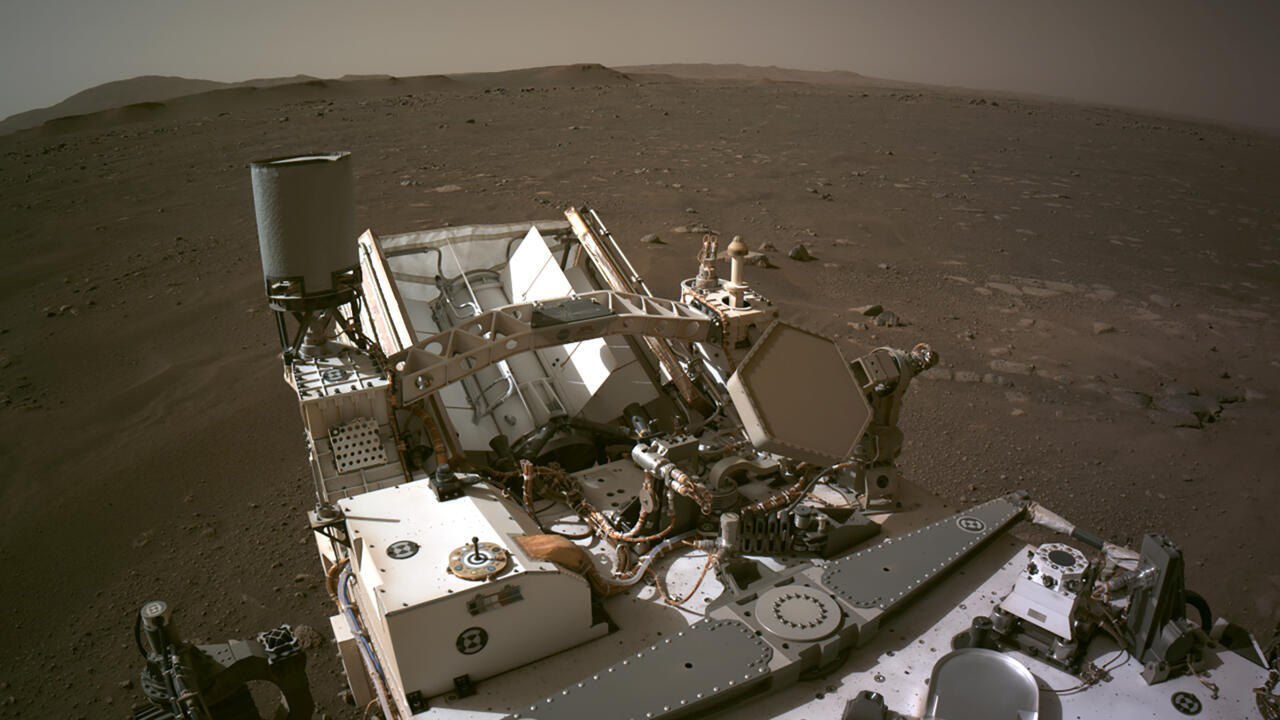Originally planned to deliver 30 sample tubes to Earth by the 2030s, the Mars Sample Return mission has faced rising expenses and delays, prompting the US space agency to explore more streamlined solutions.
The pivot comes as China progresses towards a simpler “grab-and-go” sample return mission to the Red Planet “around 2028,” according to state media, potentially making it the first nation to achieve the feat.
Outgoing NASA Administrator Bill Nelson revealed Tuesday that the agency is evaluating two potential architectures for landing a robotic platform on Mars, with a final decision expected in mid-2026.
The first option uses NASA’s tried-and-true Sky Crane system, a robotic jetpack that famously lowered the Curiosity and Perseverance rovers onto the Martian surface in 2012 and 2021, respectively.
The second involves a “heavy lift lander” developed by a commercial partner to place the necessary hardware on the surface.
“You all know that SpaceX and Blue Origin have already been ones that have expressed an interest, but it could be others as well,” said Nelson.
Under both scenarios, the lander would carry a scaled-down Mars Ascent Vehicle — a lightweight rocket designed to launch samples into Mars orbit.
There, the Earth Return Orbiter, being developed by the European Space Agency (ESA), would intercept the payload for the journey back to Earth.
NASA is also revising its power strategy for the lander. Instead of solar panels, which are vulnerable to Mars’s dust storms, the agency plans to use a nuclear battery for heat and energy.
With the Sky Crane option, NASA estimates expenses could range from $6.6 billion to $7.7 billion — far less than the $11 billion projected under the original plan, as reported in an independent audit.
Partnering with commercial providers could reduce costs further, to between $5.8 billion and $7.1 billion, with the return expected between 2035-2039, compared to 2040 under the original plan.
The mission’s timeline depends on variables like annual congressional funding and whether NASA and ESA opt for a direct Mars-to-Earth flight or a detour to a “cislunar orbit” around the Moon, where samples would need retrieval.
Meanwhile, China’s simpler mission could deliver samples years ahead of NASA, marking a significant symbolic victory.
Nelson downplayed comparisons between the programs, emphasizing the complexity and scope of NASA’s effort. “You cannot compare the two — ours… is an extremely well thought-out mission created by the scientific community of the world,” he said.
Perseverance landed on Mars in 2021 to search for evidence of ancient microbial life from billions of years ago, when the planet was warmer and wetter.
© 2025 AFP






